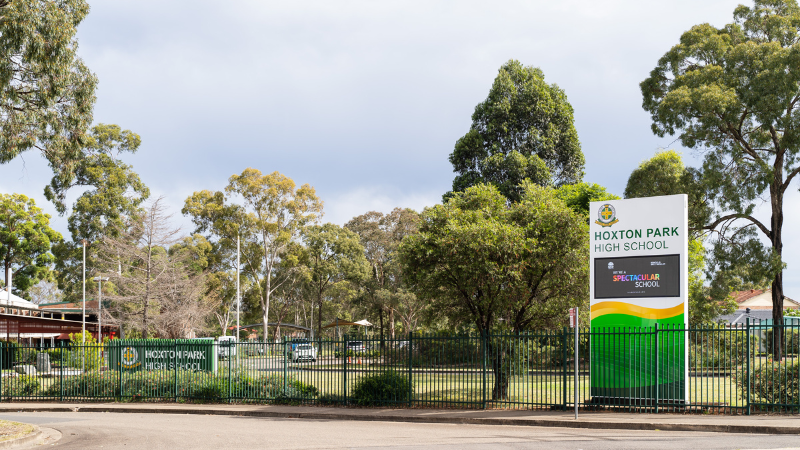Indigenous Signs for Australian Schools
by Natarsha | School Signs

One way to do this is by placing signs around our schools and other public areas that show recognition of the traditional owners of the land. Signs like this will help to teach the histories, cultures, and core values of Australia’s First Nations.
At Corporate Sign Industries, we have over 35 years of experience in creating innovative signage design solutions for Australian schools. Let’s walk you through what you need to know about indigenous signage and how you can incorporate it at your school today.
Acknowledgment of Country Vs. Welcome to Country – What is the difference?
Before we begin with the list, let’s first differentiate between Acknowledgment of Country and Welcome to Country. That way, you’ll have an idea of which one to use and how to use it appropriately.
You may hear of these terms quite often, and for some, they might think that they’re interchangeable. Acknowledgement of Country and Welcome to Country both aim to pay respect to the Aboriginal peoples of Australia and their relationship with the land. However, Acknowledgment of Country and Welcome to Country are distinct from each other, and it’s only appropriate that we learn the difference.
If you wish to include a Welcome to Country, or do an Acknowledgement of Country, ensure that you consult with Aboriginal people of the community where the event is to take place, to make certain that the ceremony pays the appropriate level of recognition and involves the right people.
Welcome to Country
A Welcome to Country is a ceremony performed by a Traditional Custodian of the land where the event is taking place, usually an Elder or another recognised spokesperson. It should be included as part of the opening of any event and is a formal display of welcoming people onto the Elder’s land.
Welcome to Country ceremonies have many different protocols, and they vary across regions and localities. The ceremony may be delivered either in language or in English and can be a simple speech or include performances, such as a traditional song or dance, playing the didgeridoo, a smoking ceremony, or a combination of these.
Acknowledgment of Country
An Acknowledgment of Country is a statement usually delivered as part of Welcome that recognises the traditional owners of the land. If a Traditional Owner is not available, then an Acknowledgement of Country is delivered instead, as any person can perform this to show respect for Aboriginal peoples and their culture, heritage, and existing relationship these Traditional Custodians have with the land.
An Acknowledgment of Country can be used on its own for internal and smaller events, otherwise, it is appropriate to deliver an Acknowledgement of Country following a Welcome to Country.
Acknowledgment of Country Signs
Many schools adopt Acknowledgment of Country signs to show recognition of the Traditional Custodians of their school’s land and to invite people to pay respect to the First Nations peoples.
It’s a chance for everyone to acknowledge the importance of Australia’s cultural history. Allow your students, staff and everyone in the school to connect with Acknowledgement of Country by placing the signs in common areas such as the school gate, front office, assembly hall, playground and garden.
Pole signs
Pole signs are great way of promoting awareness and showing respect to Australia’s Aboriginal heritage.
They are compact so you can fill an area with several signs and each one can convey a single message, which together forms a collective idea. This type of arrangement works well lining a pathway or in garden areas.
Pole signs are versatile and customisable. They are a great way to display indigenous custom artwork, school core values and can be produced to resemble didgeridoos or pencils, just to name some ideas.
Interpretive Signs
Heritage Interpretation and Interpretive Signs are often used as part of a larger wayfinding signage system within a school. Whilst they are not directional signs themselves, they are used to introduce and explain elements in a space that are significant and help build a narrative.
Interpretive signs can promote local heritage and educate your students and visitors, particularly if they are made to be interactive. Using mascots or props, and ensuring your interpretive signage is curated to suit your audience, encourages engagement.
As an example, an interpretive sign can be used to explain the name given to a native plant that people pass within your school. This helps to remind people of the history and significance of First Nations people and reinforces your Acknowledgement of Country.
Closing Thoughts
Schools are where children learn more about the world around them. It should also be where children learn about their country’s history and show respect to the land and the community, especially the Traditional Custodians of the land. That’s why we believe that putting indigenous signs within schools should be common practice.
At Corporate Sign Industries, we provide solutions to your signage needs. Our dedication to providing quality yet cost-effective service has allowed us to stay in business for over three decades. Get in touch with us now by calling 1300 762 764 or through our contact form.



